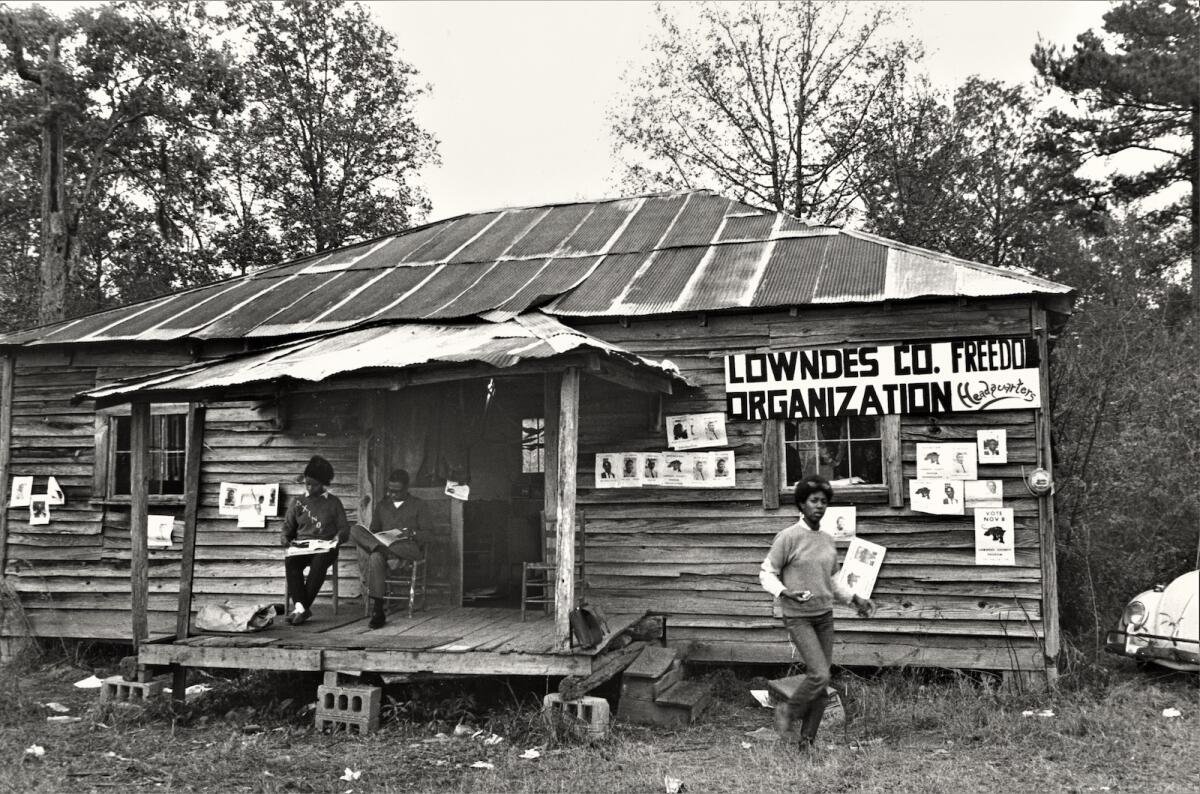‘Lowndes County and the Road to Black Power’ chronicles the fight for civil rights

- Share via
There is a long established iconography surrounding civil rights activism in the American South, especially in the long politically-charged state of Alabama. From the Montgomery bus boycott to the historic Selma march, the images circulated in our visual media history have centered the most visible figures of their times, offering narratives of extraordinary individuals — political leaders such as Rosa Parks and the Rev. Martin Luther King Jr. — at the helm of social change.
With “Lowndes County and the Road to Black Power,” directors Geeta Gandbhir and Sam Pollard unearth a broader context of civil rights action in Alabama. One of the poorest counties in the country, Lowndes is a close neighbor to both Selma and Montgomery, cities which have been much more historically visible in regard to the political action of its citizens.
For your safety
The Times is committed to reviewing theatrical film releases during the COVID-19 pandemic. Because moviegoing carries risks during this time, we remind readers to follow health and safety guidelines as outlined by the CDC and local health officials.
Focusing their lens on grassroots organizing in Lowndes — a county so structurally and physically violent towards its Black residents that it is referred to as “Bloody Lowndes”— “MLK/FBI” director Pollard and “I Am Evidence” filmmaker Gandbhir decentralize the kind of mythos that has surrounded civil rights activists of the time. What they offer instead is a collective history of a majority Black-led movement in Lowndes County that fought for civic power for its Black residents.
Placing us in the midst of the fight for civil rights, we learn that in 1965 Lowndes county was 80% Black but had zero Black individuals registered to vote. We learn of the exploitative practice of sharecropping and how it effectively replaced the function of slavery in the Alabama region. The focus here is SNCC — the Student Non-Violent Coordinating Committee — and, within that, the constellation of activists, civic figures and residents that formed the social environment of Lowndes county.
We hear from the well-known figures — Stokely Carmichael, Fannie Lou Hamer, John Lewis and King — of course, but what Pollard and Gandbhir do best with “Lowndes County and the Road to Black Power” is offer a view of what the fight for Black power in the Alabama county really looked like. It’s a powerful method of historiography that refuses the erasure of everyday people, of all those figures who stood in opposition to this fight, of those who were on the front lines at every moment but erased from the histories that they helped to shape.
Rare archival footage is intertwined among the film’s historical narrative with an all-too-rare grace — the images we see here lend themselves to a deep and nuanced understanding of Lowndes County at the time; not just the shared, communal efforts but the mapping of both community and anti-Blackness as it materialized through the everyday.
It’s a specificity that is more than welcome — certainly, what Pollard and Gandbhir achieve with their film is a sharp focus not just on collective action, but a method of storytelling that is exacting and in its look at a precise moment of previously overlooked political history. It’s a reminder that history demands retelling and revisiting, and that the work of the struggle must be regenerative and, above all, interconnected.
'Lowndes County and the Road to Black Power'
Not rated
Running time: 1 hour 30 minutes
Playing: Laemmle Monica, Santa Monica
More to Read
Only good movies
Get the Indie Focus newsletter, Mark Olsen's weekly guide to the world of cinema.
You may occasionally receive promotional content from the Los Angeles Times.








